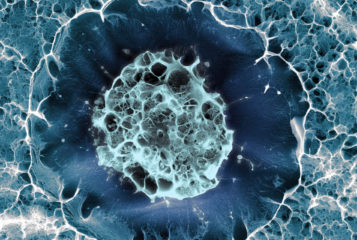The panel investigating the work of South Korean scientist Woo Suk Hwang has reported that further research published by his team was faked. The scientists, based at Seoul National University (SNU), claimed in 2004 that they had created the world's first embryonic stem cell(ES cell) line from a cloned human embryo. But an investigation lead by SNU has found that no such cell line exists. The finding completes Hwang's downfall, after last week's announcement that 11 ES cell lines genetically matched to patients, published last year, were also fabricated. However, his reputation as an expert in animal cloning remains intact - 'Snuppy' the Afghan hound, unveiled last year, appears to be a genuine clone.
Hwang's work had been hailed as a major advance towards the development of new therapies using ES cells genetically-matched to patients, via 'therapeutic cloning'. The discovery that the cell lines described in both his 2005 and 2004 Science papers were fakes has sent shockwaves through the scientific community. Science has now retracted both papers. The journal is also said to be considering changes to its procedure for accepting articles, including a requirement for statements from each author describing their contribution to the work.
The SNU panel carried out DNA fingerprinting analysis on the cell line described in the 2004 paper - named NT-1. The work, performed by three independent test centres, showed that the DNA profile of NT-1 was 'clearly different' to that of the anonymous female donor from which it was reportedly derived. The supposed photographs of NT-1 in the Science paper are in fact images of human ES cell lines derived from IVF embryos. The committee carried out further tests on NT-1, the results of which suggest it could originate from an embryo created by the fusion of an egg with a 'polar body', a cell produced during egg development. This could have triggered a process called parthenogenesis, in which an egg can start to grow and develop without being fertilised by a sperm.
The extensive SNU probe did, however, reveal that Snuppy - reported in the journal Nature last year - really is the world's first cloned dog. An independent investigation carried out by Nature also proves that Snuppy is identical to Tai, his genetic donor. Elaine Ostrander of the US National Human Genome Research Institute, who carried out the tests, says they have ruled out the possibilities that the dogs were simply highly inbred relations, or twins created by IVF. Ostrander suggests that such independent tests could become a routine part of future cloning research.
Hwang has apologised to South Koreans, at a televised press conference held on 12 January. He said he could not lift his head for shame, and would take responsibility for failing to check the data that was produced by his researchers. He claimed that his lab had produced about 100 cloned embryos, but the hospital responsible for developing them into stem cells had deceived him about the results.
Hwang and his colleagues are now barred from leaving the country, and could face criminal prosecution. The authors of the SNU report conclude that 'these individuals cannot be regarded to represent science in Korea', and add that 'the scandalous case of Woo Suk Hwang and cloned ES cells will not have a large impact on the effort of the scientific community in Korea'. Stephen Minger, a stem cell expert based at King's College in London, UK, says he and other admirers of Hwang are 'deeply saddened' by the revelations. But he stressed that 'it is important to remember that cloning and stem cells are different things, and that stem cell lines continue to be made without using nuclear transfer'.
Sources and References
-
All Hwang human cloning work fraudulent
-
Hwang faked all research on human stem cells
-
Journal to Examine How It Reviewed Articles
-
Summary of the final report on Hwang's research allegation





Leave a Reply
You must be logged in to post a comment.